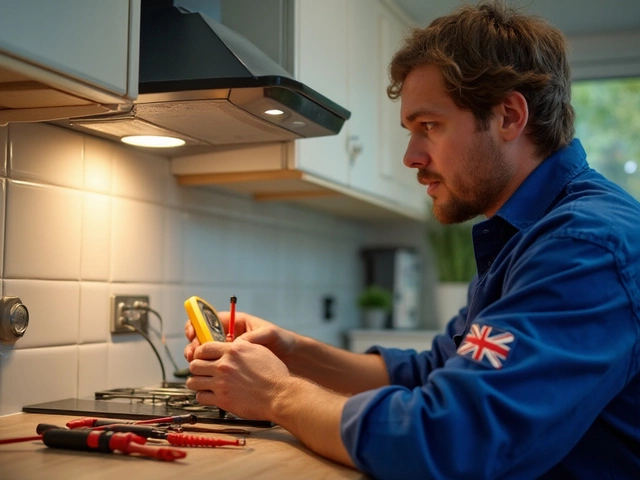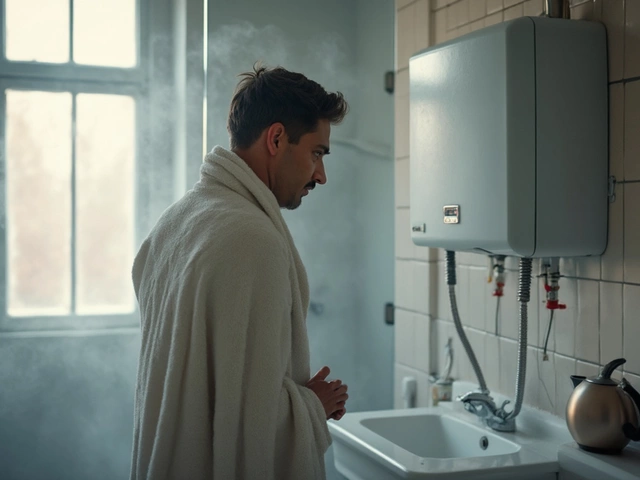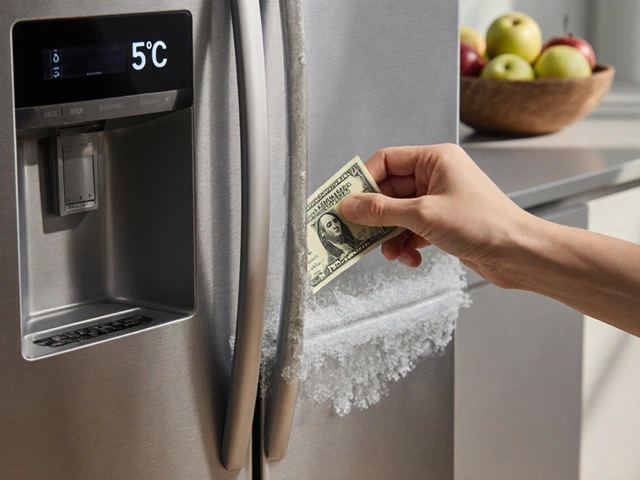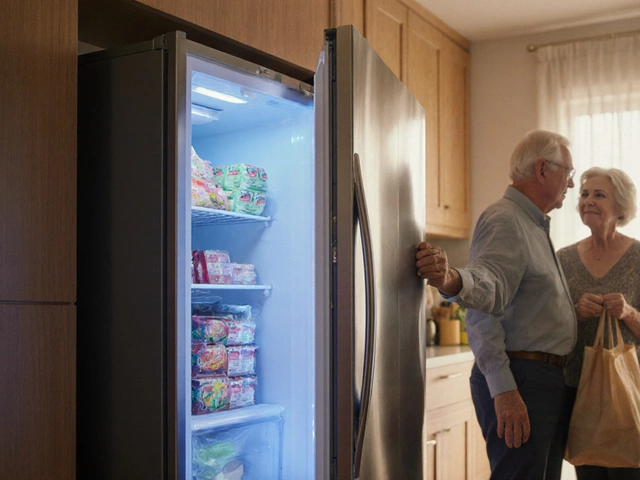Freezers shouldn’t play mind games. You open the door, but instead of icy frost, you find squishy peas and ice cream that’s now a sad puddle. Suddenly you’re panicking, thinking of expensive repairs or, worse, wasted groceries. Freezers are supposed to make life easier, not fill your kitchen with melting mayhem. But before you drag it to the curb or scramble for repair quotes, let’s get straight into why your freezer just can’t seem to keep things cold anymore. The reasons can range from silly mistakes to genuine hardware meltdowns—but most of the time, the fix is easier than you imagine.
Everyday Mistakes That Leave Freezers Lukewarm
This might bruise the ego, but at least a third of freezer “emergencies” start with habits, not hardware. Take the classic move: jamming hot leftovers straight in. Freezers come with a set amount of muscle, and shoving in warm food steals valuable cold, raising the temperature fast enough to spoil everything else. Always let leftovers cool at room temperature, then refrigerate, before finally sending them to the freezer.
Another blunder? Constant door-peeking. Kids (and let’s be honest, adults) swing open the door, gaze, then wander away with the door slightly ajar. Even a tiny gap means frosty air leaks out, and warm kitchen air rushes in, forcing your freezer to grind double time—while the food inside starts sweating. Modern freezers have magnetic seals, but if you notice condensation, ice build-up near the door, or frost on your food, don’t ignore it. A 2023 survey by the UK’s White Goods Trade Association found that nearly 42% of freezers in homes over 10 years old had worn seals causing cooling problems. Seals are cheap and easy to swap out yourself, too; just make sure the model matches.
Ever check your settings after a power outage or a cleaning spree? Freezers with dials or digital controls might get knocked to the “minimum cool” side by mistake. Always check your temperature control: the ideal is -18°C (0°F). A simple fridge thermometer costs less than a fancy coffee but saves you from losing pricey steaks. And if your freezer shares an outlet or extension lead with other greedy appliances, voltage dips can make your compressor lazy. Plug the freezer straight into the wall, and see if performance snaps back.
Placement matters more than people think. Push your freezer tight against the wall, and you’re choking its ability to get rid of heat from the coils. Manufacturers recommend a gap of at least 5–10 centimetres (about 2–4 inches) behind the freezer. In cramped kitchens or stuffy garages, putting the freezer next to the oven, dryer, or under direct sunlight will also make it struggle. Some freezers come with “climate class” stickers, showing the minimum and maximum temperature they’ll run best in. Exceeding that range is like asking someone to run a marathon in a sauna—it just won’t work out.
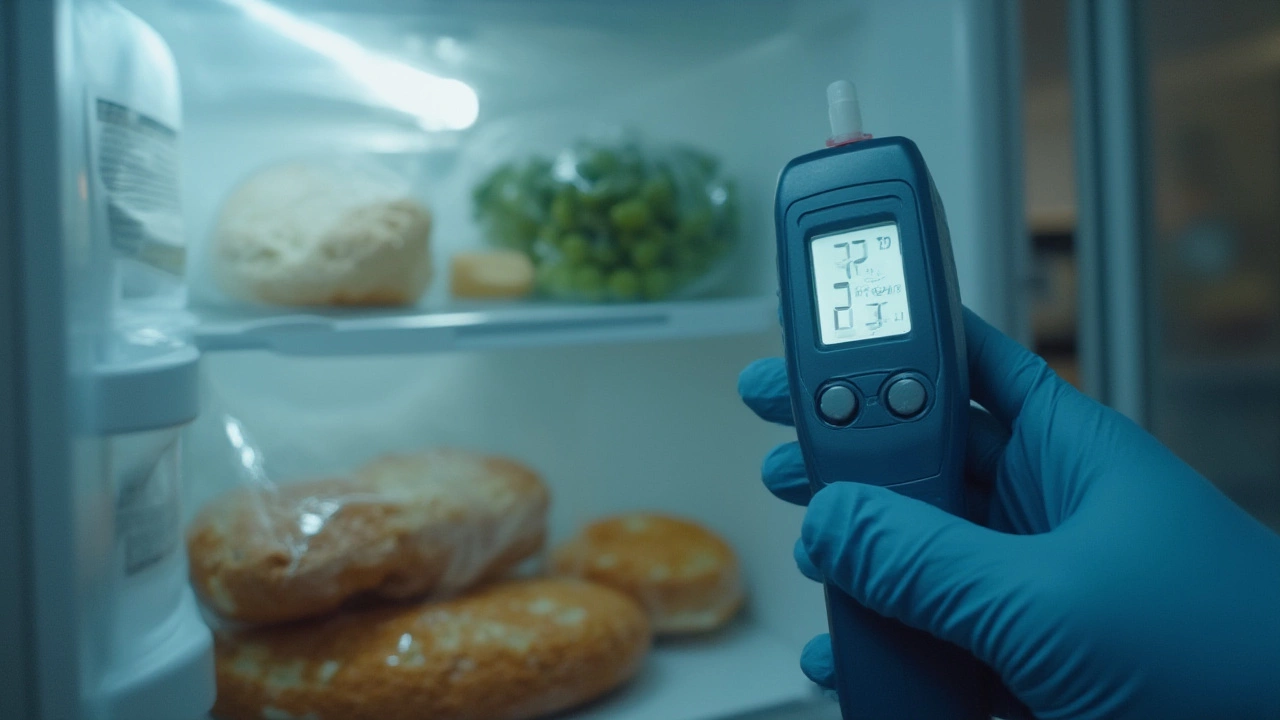
Hardware Hassles: Parts That Sabotage Your Freezer
When the basics check out, but your freezer still can’t hit cold, chances are something inside isn’t pulling its weight. The two main players are the compressor and the evaporator fan. The compressor is basically the freezer’s heart—it pumps refrigerant around the coils, absorbing heat from the inside and dumping it out the back. If your compressor clicks but never hums, or you hear constant clicking, that’s usually a failed start relay or the compressor itself wearing out. This is rarely a DIY fix unless you’re handy with electrical components, but at least you’ll know what to ask the technician.
Evaporator fans sit behind the rear panel in most upright freezers. They circulate frigid air across foods for even cooling. If you notice uneven temperature (like burgers on top melting, chicken on the bottom still rock solid), suspect a lazy fan. You can listen for it: it should whir a few seconds after the compressor kicks in. A quick way to test: press the door switch and listen for the fan spinning down—if you hear nothing, it’s time for replacement.
Frost or ice creeping along the inside is a classic warning sign of failed defrost systems. Modern freezers use a heater to melt away frost on coils every six to 12 hours. If the defrost timer, heater, or thermostat fails, the frost piles up, air circulation drops, and the freezer warms up. This is a particularly sneaky problem in frost-free models. If you spot ice inside vents or along the back wall, defrost the entire unit for at least 24 hours. If it works again after restarting, but problems return in a week, get someone to test the heater and timer sections.
A clogged condenser coil puts your entire cooling loop at risk—it traps heat and forces the compressor to burn out sooner. Check for dust bunnies or pet hair on the coils (usually found on the backside or below the unit). A simple vacuum and brush can fix performance. Some stats from a British Energy Saving Trust report: dirty coils can cut your freezer’s efficiency by 15%. For modern side-by-side freezers, those savings easily add up to £25 a year in electricity alone.
One lesser-known culprit in chest or upright freezers is the temperature sensor (thermistor). This sensor tells the control board when to cycle the compressor. If your freezer cycles too quickly or rarely kicks on, the sensor could be faulty. If you’ve got a digital display, seeing blinking error codes usually tells you which part is the troublemaker; check your manual or look up your model online to decode the message. If your freezer lacks a display but you suspect the sensor, a cheap digital multimeter bought online will allow you to test resistance. Healthy sensors typically read between 4,000 to 16,000 ohms, depending on temperature. Out-of-range readings mean it’s time to replace it.
Water leaks inside the freezer? That points to a clogged or frozen defrost drain. Water needs to escape under the freezer during defrost cycles, and if that tiny hole gets iced up, water pools inside and temperature spikes. If you notice puddles, unplug the freezer, poke the drain with a soft pipe cleaner or turkey baster filled with warm water, and carefully remove ice plugs. Don’t ever use sharp objects—you’ll end up puncturing the liner, which is a death sentence for most freezers.
Take a look at this simple table to match symptoms with the most common causes:
| Problem or Symptom | Likely Culprit | Quick Fix or Action |
|---|---|---|
| Food soft or thawed | Warm food loaded, door left ajar, power issue | Let food cool, check seals and outlet |
| No humming from behind freezer | Compressor or relay problem | Test outlet, listen for click/hum, call technician |
| Uneven temperature inside | Evaporator fan, air vents blocked | Move food away from vents, listen for fan |
| Frost or ice inside | Failed defrost system, door gap, bad gasket | Defrost unit, inspect gaskets, check timer |
| Puddles of water under or inside | Clogged defrost drain | Clear the drain with warm water |
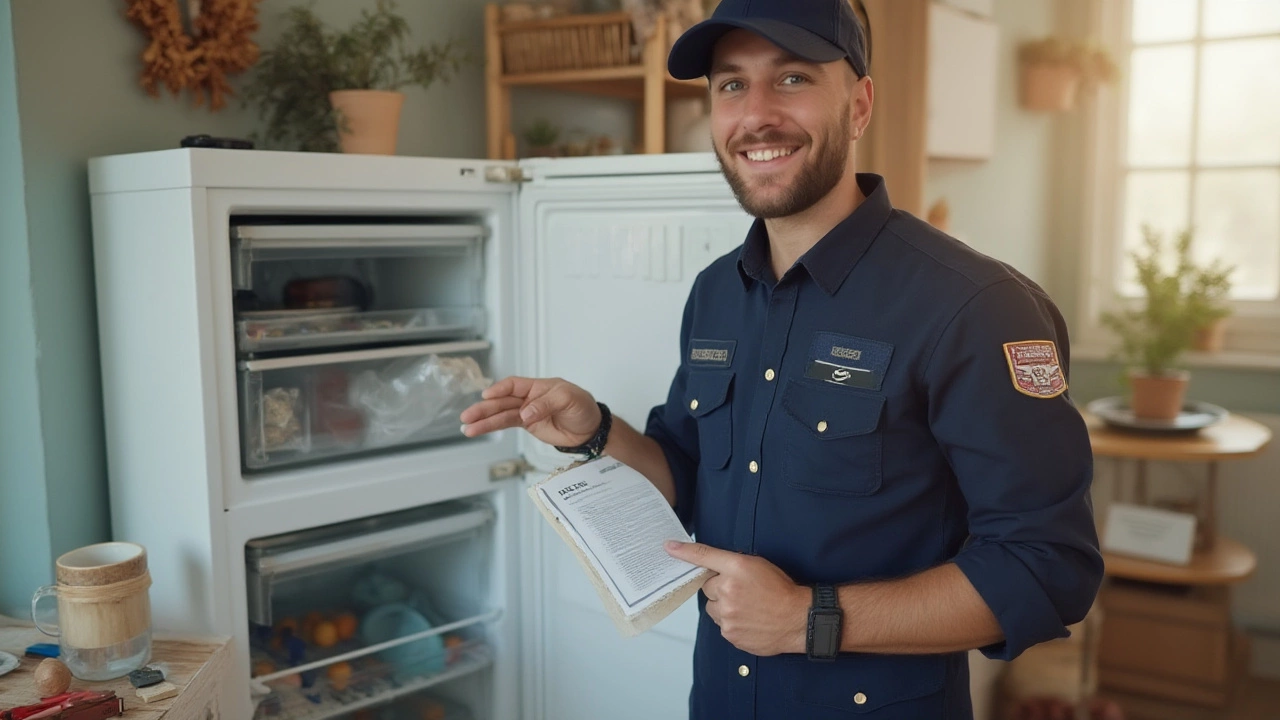
Staying Frosty: Freezer Maintenance Tips, Tricks, and Tech
If your freezer checks out after troubleshooting, don’t just forget about it. There’s plenty you can do to keep it frosty long-term. Old wisdom says keep your freezer as full as possible—not overstuffed, but full. That’s because frozen food itself acts like ice packs. The more mass you’ve got inside, the longer cold sticks around, even during power cuts. But don’t shove boxes against vents. Allow airflow so the fan can do its job. A 2022 Which? consumer report proved that upright freezers with 70–80% contents keep even temps best, compared to empty (which sees more wild temperature swings).
Defrosting isn’t just a blast from the past. Many chest and older upright freezers need manual defrost every six months, or whenever ice exceeds 6mm thickness (about 1/4 inch). That ice isn’t just an eyesore. It insulates the coils and raises your power bills. For people with manual-defrost models, keep a calendar or a reminder on your phone. Too busy? The best freezers made in the last three years have auto-defrost, but even those need a quick check for pooled water or sticky doors.
Clean the coils at least twice a year. Modern freezers are usually much more energy efficient, partly thanks to improved insulation and smarter control boards. However, a thin layer of dust can undo those advances. Be especially careful if your freezer is in the garage or a utility room—lint builds up fast. If you own a pet that sheds, quarterly cleaning is smart.
Pay attention to unusual noises or heat. Compressors tend to hum, not squeal or rattle. If you hear rumbles or knocks, snap a video and show a repair pro. Early action can save you not just groceries, but expensive compressor jobs.
Ever wondered if all freezers are created equal? There’s actually a “climate class” for each model, coded as SN, N, ST, or T. SN models are only meant for rooms down to 10°C (50°F), while ST/T models handle kitchens up to 43°C (109°F). Putting the wrong class in a shed or sunny kitchen will spell disaster come summer, which explains why some freezers break down every July. Always ask or check your manual, especially for units over five years old.
Don’t trust the dial without proof. A simple digital thermometer placed mid-freezer (not on the door) tells you what’s really happening inside. For people wanting to get fancy, smart freezer plugs on the market now let you monitor temperature and power cycling on your phone, warning you of any irregularities or outages—giving you a fighting chance before everything melts.
One more tip for holidaymakers or those who experience power cuts: freeze a cup of water, then place a coin on top. If you come back and the coin’s dropped to the bottom, you know things thawed out while you were away—even if the freezer is refrozen by the time you check. Simple, clever, and could save your health from spoiled food.
Whether it’s silly habits, mechanical villains, or just needing a little TLC, a freezer that won’t stay frozen isn’t something you have to live with. Use this troubleshooting guide, pay attention to your model’s specifics, and you’ll avoid most frozen disasters altogether.



